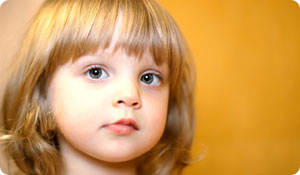
When you think of strokes, you probably think it only happens to adults. In fact, pediatric stroke also exists and it's important to know the signs of this serious condition in case your child is at risk.
Pediatric Stroke
While pediatric stroke is rare, it does happen, affecting about 3 in every 100,000 children every year. Furthermore, children under the age of 2 are at a slightly increased risk of becoming a victim, according to the National Stroke Association.
Signs of Pediatric Stroke
One of the best ways you can protect your child from the danger of a pediatric stroke is to recognize the signs and respond quickly. Please review some common symptoms that your child may experience if she suffers a stroke.
- A bad headache
- Nausea and vomiting
- Clammy skin
- Slow pulse (sometimes with prominent veins in neck)
- Slurred speech or absence of words
- Blurred vision or partial or complete loss of sight.
- Numbness or coordination problems, typically on one side of the body
- Facial droop
- Seizure
- Losing consciousness briefly
It's essential to know that if your child exhibits any of these worrisome symptoms, you should call 911 right away. The faster medical treatment begins, the better the chance of recovery is; so time is truly of the essence.
What to Expect
If your child does suffer from a stroke, she could have a variety of physical and cognitive impairments that she'll have to deal with for the rest of her life. However, on a more positive note, children are very resilient and their brain is sometimes able to heal itself better than an adult's. As a result, some young stroke survivors regain much, if not all, of the function they lost. This can be very encouraging news for parents.
Pediatric Stroke Risks
Also keep in mind that while the affects of pediatric strokes are similar to those that strike adults, the causes are very different. Adult strokes often occur as the result of high blood pressure or cholesterol, obesity, smoking or excessive alcohol use. In children, its occurrence can more often be traced back to birth defects, serious infections, trauma or blood problems.
Although you can't prevent many pediatric stroke causes, you can help your child reduce her overall risk factors by making healthy lifestyle choices, both now and in the future. Make sure your child eats a balanced diet, gets plenty of regular exercise and maintains a healthy weight, since obesity can be a stroke risk factor later in life.
Also help your child to avoid second-hand smoke, since exposure can increase the risk of experiencing a stroke. Finally, have your child's blood pressure checked starting at age 3 and every year thereafter to ensure it's in the normal range.
Sources
National Stroke Association
http://www.stroke.org/site/PageNavigator/PEDSTROKE
St. Johns Hospital
http://www.st-johns.org/services/stroke_center/Children.aspx





